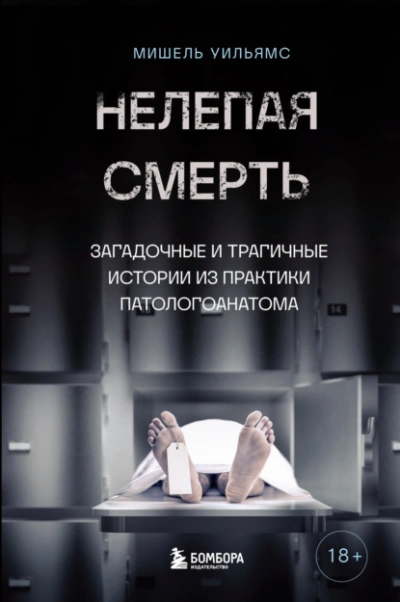Шрифт:
Интервал:
Закладка:
The Antioch and Jerusalem Patriarchates became parts of the Orthodox community (millet-i rum) which included the Constantinople and Alexandria Churches and the Antioch and Jerusalem Patriarchates (“The Mother of all Churches”). This community of Orthodox Churches was headed by the Ecumenical (Constantinople) Patriarch as the head of “the entire Orthodox nation” of the Ottoman Empire. Starting from the early 1830s the Russian Empire stepped up its Eastern policy, claiming the role of protector of the Orthodox millet and providing political, material and moral assistance to the Orthodox subjects in the Ottoman Empire.
This policy triggered the dissatisfaction and annoyance not only of the Ottoman government (the Sublime Porte), but also of the western powers, first of all Great Britain, France and Austria, and then Prussia as well. In the middle of the nineteenth century a Greek-Latin dispute about the Holy places in Bethlehem and Jerusalem became a casus belli for international conf1ict which led to the Crimean (Eastern) War, known in the Middle East as the “War for the Holy Places of Palestine.”
In the second half of the nineteenth century Russia continued to strengthen its consular and ecclesiastical presence in Syria and Palestine, assisting the Arab Orthodox clergy and parishioners as well as the Greek clergy of the Antioch and Jerusalem Patriarchates. In the aftermath to World War I both the Russian and the Ottoman Empires broke up, which put an end to the Russian policy of protecting the Eastern Orthodox Churches in the Middle East and the Balkans.
The monograph examines the history of two Eastern Orthodox Churches, the Antioch and Jerusalem Patriarchates, as a part of the entire Orthodox nation (millet-i гипї) in the Ottoman Empire and the development of their relations with Russia during the decline of the Ottoman State which covered the nineteenth – early twentieth centuries. The monograph is the first such attempt to use a comprehensive approach to study the two Orthodox Sister-Churches as Christian subjects of the Ottoman Empire and their contacts with the Russian government and the Sublime Porte.
The book contains a preface, six chapters, a conclusion and appendix. Chapter One: “Sources and historiography” analyzes historical sources and books by Russian and foreign historians, writers and researchers which were used in researching this book.
Chapter Two: “Christian communities in the ethno-confessional system of the Ottoman provinces of Syria and Palestine.”
Chapter Three: “The ecclesiastical and political status of the Antioch and Jerusalem Patriarchates in the Ottoman Empire.”
Chapter Four: “The confrontation between Greeks and Arabs over leadership of the Antioch and Jerusalem Patriarchates and the role of Russia in the con† 1ict.”
Chapter Five: “Russia in the dispute between local religious denominations on the status quo of the Holy Places in Palestine.”
Chapter Six: “The evolution of Russian diplomatic relations with both ‛Syrian’ and ‛Palestinian’ Patriarchates.”
The appendix of the book contains many archival documents that expand on these issues.
The book is of interest to Orientalists and scholars and to the reading public interested in both the history of the Ottoman Empire and the foreign policy of the Russian Empire, which was trying to protect the Orthodox Patriarchates in the Middle East under the Ottomans.
Михаил Ильич Якушев — кандидат исторических наук, историк-востоковед, арабист, османист, переводчик арабского языка на высшем уровне. Выпускник Института стран Азии и Африки МГУ. Работал на дипломатическом поприще в Тунисе и Израиле. Первый вице-президент Фонда Святого Всех вального апостола Андрея Первозванного и Центра национальной славы России. Автор более 30 научных и научно-популярных работ по истории восточного православия и русского политико-дипломатического и духовного присутствия в Османской империи. Лауреат премии памяти Митрополита Московского и Коломенского Макария (Булгакова).
Примечания
1
Мусульмане, греко-православные и различные группы католиков проживали в каждом санджаке Сирийского вилайета. Сиро-католики и марониты – только в Дамасском и Хамесском санджаках. 60 % друзов поживало в районе Дамаска, а 40 % – в Хауранском санджаке.
2
874, с. 182.
3
В таблице вместо применяемых Османами фискальных годов по хиджре для удобства указываются года по григорианскому календарю (например, вместо 1296 г.х. – 1878/79 г.).
4
874, с. 185.
5
Иезиды (езиды) – религиозная секта курдов Ирака и Сирии.
6
Там же, с. 186.
7
Таблица составлена на основе «провинциальных ежегодников» (салнамэ) и ежегодно обновляемых журналов регистрации населения (нуфус дефтер/тахрир): салнамэ 1312, салнамэ 1321, салнамэ 1321, нуфус 1330 (874, с. 200).
8
В Халебском санджаке, который охватывал приблизительно район Халебского вилайета, христиане были расселены достаточно равномерно во всех казах, за исключением наиболее отдаленных (в Джебеле Семане, Ма‘арре, Мунбидже/Мембидже). «Смешанные» христианские миллеты в Халебском санджаке (когда в одном районе проживали различные христианские общины) были типичны для Османской империи. В нем проживало 86 % мусульман, 5 % «греков» (православных и греко-католиков), 6 % армян (представителей Армяно-апостольской, Армяно-католической и Протестантской церквей), 2 % иудеев, а также общин сиро-католиков, халдеев, сиро-яковитов и маронитов. В трех северных санджаках (‘Урфа, Мараш и ‘Айнтаб) миллетная структура населения была более типична для Анатолии – 85 % мусульман, 14 % армян, менее 1 % сиро-католиков, без халдеев, сиро-яковитов и маронитов (там же, с. 201). Город Алеппо (Халеб) урбанизировался не столь быстро, как Дамаск и Бейрут (там же, с. 202).
9
Таблица составлена на базе Халебского салнамэ 1319 (1897 г.) (там же, с. 202).
10
Таблица составлена на базе следующих источников: салнамэ 1319 Халеба (1901/02 г.); нуфус 1330 (1911/12 г.) (874, с. 203).
11
В нуфус 1330 (1911/12 г.) по ошибке напечатано «Болгары» (там же, с. 203).
- Культы, религии, традиции в Китае - Леонид Васильев - Религиоведение
- Учебник “Введение в обществознание” как выражение профанации педагогами своего долга перед учениками и обществом (ч.2) - Внутренний СССР - Политика
- Александр Пушкин и его время - Всеволод Иванов - История
- Союз горцев Северного Кавказа и Горская республика. История несостоявшегося государства, 1917–1920 - Майрбек Момуевич Вачагаев - История / Политика
- Путь в Церковь: мысли о Церкви и православном богослужении - Иоанн Кронштадтский - Религиоведение
- Тайны Кремля - Юрий Жуков - История
- История евреев в России и Польше: с древнейших времен до наших дней.Том I-III - Семен Маркович Дубнов - История
- Советские двадцатые - Иван Саблин - История
- Хрущевская «Оттепель» 1953-1964 гг - Александр Пыжиков - Политика
- Иерусалимский православный семинар. Выпуск 4 - Сборник статей - Религиоведение







